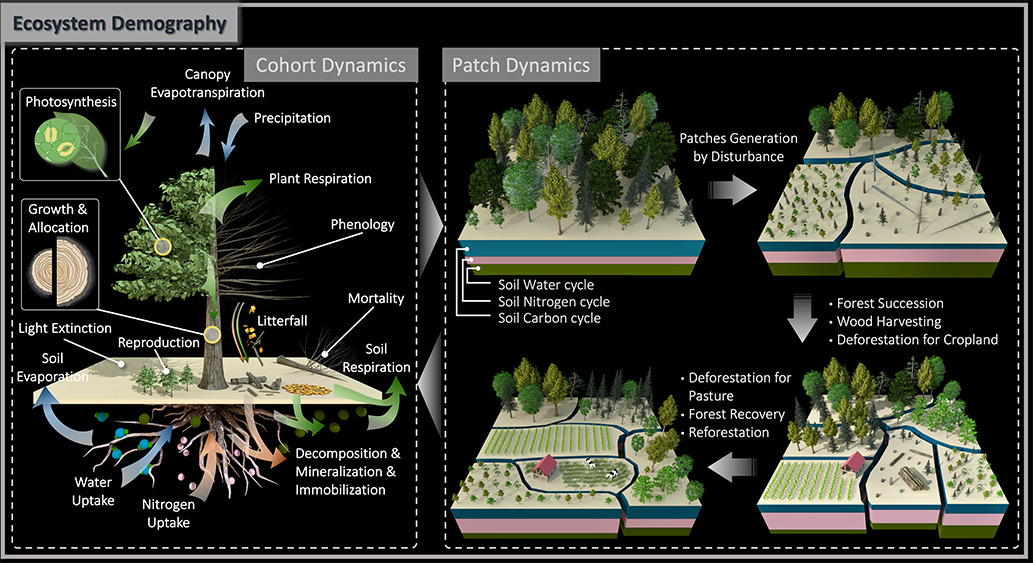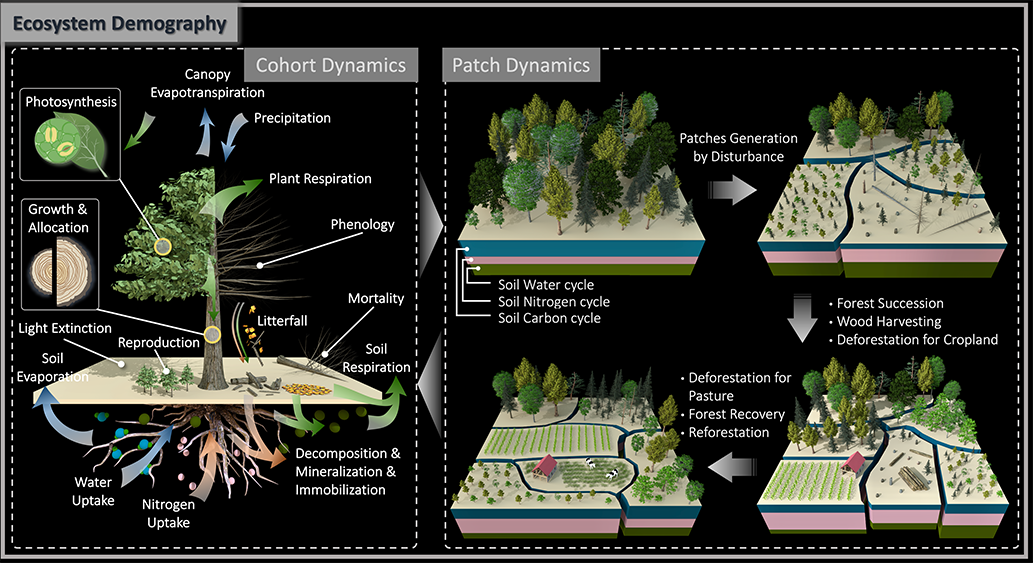A new paper, led by GEOG researcher Dr. Lei Ma, along with Dr. George Hurtt, Dr. Lesley Ott (NASA Goddard Space Flight Center), Dr. Justin Fisk (Regrow Agriculture, Inc.), Dr. Rachel Lamb, Dr. Hao Tang (National University of Singapore, Dr. Steve Flanagan (Tall Timbers Research Station and Land Conservancy), Dr. Louise Chini, Dr. Abhishek Chatterjee (NASA Jet Propulsion Laboratory) and Dr. Joseph Sullivan (Department of Plant Sciences & Landscape Architecture), has been published in Geoscientific Model Development. This paper presents the global development and evaluation of an ecosystem model called Ecosystem Demography (ED) model. The ED model features in formal scaling of physiological processes for individual-based vegetation dynamics to ecosystem scales, together with integrated submodules of soil biogeochemistry and soil hydrology, while retaining explicit tracking of vegetation 3-D structure. The model is a powerful new tool to address science questions related to global climate change, climate mitigation and terrestrial carbon dynamics more generally. It provides fundamental support to multiple NASA scientific initiatives including the Carbon Monitoring System, Interdisciplinary Science Program, and GEDI mission.
The full abstract of the paper is presented below:
Terrestrial ecosystems play a critical role in the global carbon cycle but have highly uncertain future dynamics. Ecosystem modeling that includes the scaling up of underlying mechanistic ecological processes has the potential to improve the accuracy of future projections while retaining key process-level detail. Over the past two decades, multiple modeling advances have been made to meet this challenge, such as the Ecosystem Demography (ED) model and its derivatives, including ED2 and FATES. Here, we present the global evaluation of the Ecosystem Demography model (ED v3.0), which, like its predecessors, features the formal scaling of physiological processes for individual-based vegetation dynamics to ecosystem scales, together with integrated submodules of soil biogeochemistry and soil hydrology, while retaining explicit tracking of vegetation 3-D structure. This new model version builds on previous versions and provides the first global calibration and evaluation, global tracking of the effects of climate and land-use change on vegetation 3-D structure, spin-up process and input datasets, as well as numerous other advances. Model evaluation was performed with respect to a set of important benchmarking datasets, and model estimates were within observational constraints for multiple key variables, including (i) global patterns of dominant plant functional types (broadleaf vs. evergreen), (ii) the spatial distribution, seasonal cycle, and interannual trends for global gross primary production (GPP), (iii) the global interannual variability of net biome production (NBP) and (iv) global patterns of vertical structure, including leaf area and canopy height. With this global model version, it is now possible to simulate vegetation dynamics from local to global scales and from seconds to centuries with a consistent mechanistic modeling framework amendable to data from multiple traditional and new remote sensing sources, including lidar.
The full paper can be accessed here: Global evaluation of the Ecosystem Demography model (ED v3.0)



